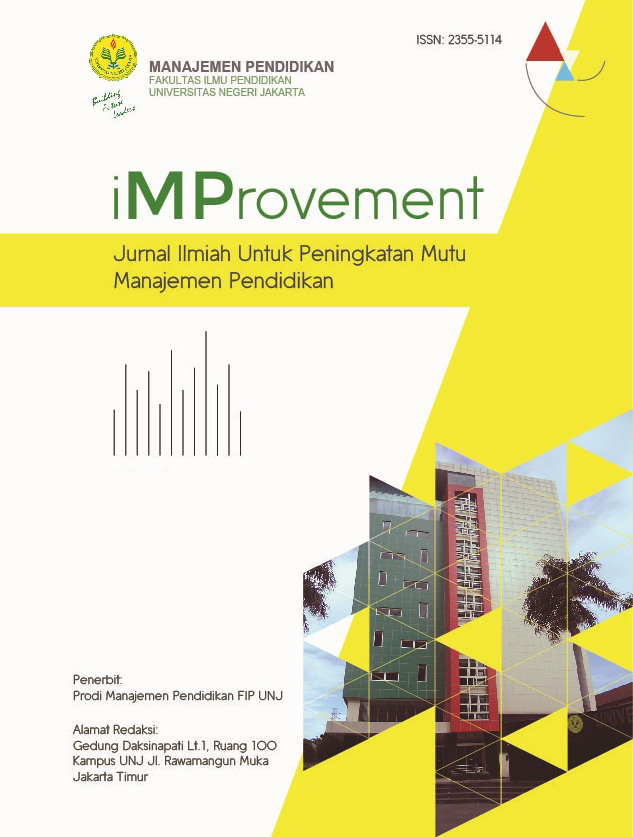PROYEKSI SISWA DI KECAMATAN SUKAMAKMUR KABUPATEN BOGOR
DOI:
https://doi.org/10.21009/improvement.v5i1.11238Keywords:
Educational Planning, Students, ProjectionsAbstract
This study aims to determine the projections of the number of school-age residents; ages 7-12 years, ages 13-15 years, and ages 16-18 years; in 2018 to 2025 based on the number of school-age population in 2015, 2016, and 2017. The study also projects the number of students in primary education (SD/ MI and SMP/ MTs) and secondary education (SMA/ SMK/ MA) based on the growing trend of the school-age population. Eventually, the study also calculates the projections of teacher and the projections of infrastructure. The study used a quantitative approach with descriptive methods by describing the documentation and interviews. The study was in Sukamakmur Sub-District, Bogor Regency. The result shows that the growth of the elementary age population,7-12 years, has decreased every year. Conversely, secondary school-age population increase every year. Regarding student projections, it is found that there is a difference between the number of students and the number of school-aged residents attending school at the appropriate level. The result also shows that there are some people who are not aged 7-12 attending primary education. The same thing happened to the high school level. This indicates that there are many junior high school graduates who do not continue their education to the senior high school level. Regarding teacher projections of elementary school teachers, the ideal ratio of teachers: students are 1:20, but the reality is 1:29. This shows that it is necessary to add the number of teachers to elementary schools in order to achieve the ideal ratio for the sake of effectiveness of learning. In contrast, junior and senior high school that already meets the ideal ratio, where for junior and senior high school are 1:15 and 1:12 respectively. This shows that there are excess numbers of teachers at the junior and senior high school level. Therefore, it is necessary to increase school enrollment rates
Downloads
Published
How to Cite
Issue
Section
License
Copyright (c) 2018 Heru Santosa, Desi Rahmawati

This work is licensed under a Creative Commons Attribution-NonCommercial-ShareAlike 4.0 International License.
Authors who publish with this Journal agree to the following terms:
- Author retain copyright and grant the journal right of first publication with the work simultaneously licensed under a creative commons attribution licensethat allow others to share the work within an acknowledgement of the work’s authorship and initial publication of this journal.
- Authors are able to enter into separate, additional contractual arrangementfor the non-exclusive distribution of the journal’s published version of the work (e.g. acknowledgement of its initial publication in this journal).
- Authors are permitted and encouraged to post their work online(e.g. in institutional repositories or on their websites) prior to and during the submission process, as it can lead to productive exchanges, as well as earlier and greater citation of published works.
-
Users/public use of this website will be licensed to CC BY-NC-SA (Attribution & Non-Commercial-ShareAlike)



